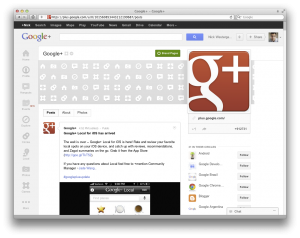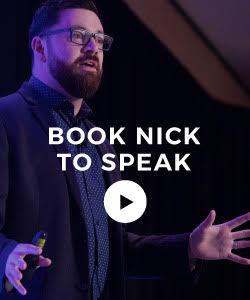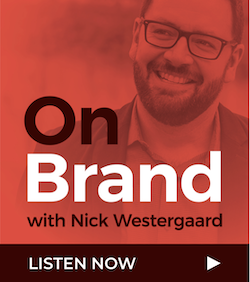My most trafficked post of 2011 occurred exactly one year ago. The post provided early insights and a review of a new social network called Google+. In hindsight the traffic spike isn’t really surprising as it’s a big new social network from the two biggest search engines on the web. Beyond being a new platform it also signaled with great force the convergence of search and social media.
[Quick aside — the blogging lesson for me from last year’s post reinforces my belief of militantly keeping your schedule. As July 4th was a Monday last year I almost didn’t post and was planning on running something else if I did. When I got my Google+ invite I took a shot and quickly put a post together and am very thankful for doing so. Go with your gut. Keep your schedule. There’s no beating topical content — especially around holidays when peoples’ eyes are prone to wander online.]
A lot has happened this past year. I’ve written several Google+ posts as well as a free eBook. However, in looking back at the last 12 months, I thought I’d examine the 12 biggest developments that demonstrate why Google+ continues to be a force to be reckoned with on the social web.
1. The Numbers
It’s hard to deny that the growth of Google+ has been steady. Two weeks after launch the network boasted 10 million users. By the end of 2011 this had jumped to 90 million. In the most recent data from Hitwise, Google+ has unseated many rival networks including Pinterest and LinkedIn, capturing the 5th position among top social media sites.
2. The Name Calling
For all the talk of numbers, the naysayers have also played a role in Google+’s history. While many have accused the network of being a ‘ghost town’ this has actually sparked an important discussion on how we use all of these social channels. Maybe Google+ doesn’t need to be ‘the next Facebook’ to be a relevant part of our online lives. I know that I use the network very differently than I use Facebook and Twitter.
3. Hangouts
 I’ve made no secret about being excited about Google+ Hangouts from the git-go. As Google+ project lead Vic Gundotra said during his SXSW Fireside Chat, there was no good reason for building Hangouts other than the fact that they knew it would be a sticky feature that users would love. Connecting people via video — whether families or co-workers — is a powerful tool. Hangouts have also been helpful for brands as diverse as Conan O’Brien, the Dallas Mavericks, and The White House. Our agency’s small work team has used Hangouts for our weekly meeting since the platform’s rollout.
I’ve made no secret about being excited about Google+ Hangouts from the git-go. As Google+ project lead Vic Gundotra said during his SXSW Fireside Chat, there was no good reason for building Hangouts other than the fact that they knew it would be a sticky feature that users would love. Connecting people via video — whether families or co-workers — is a powerful tool. Hangouts have also been helpful for brands as diverse as Conan O’Brien, the Dallas Mavericks, and The White House. Our agency’s small work team has used Hangouts for our weekly meeting since the platform’s rollout.
4. Brand Pages
Early on, brands were quick to recognize the network’s potential. Some, like Ford, were allowed in early while others, like Mashable, were booted for using personal profiles as brand pages. All brands got a turn in November when Pages were publicly launched allowing businesses to connect and engage.
5. Brand Refinements
 With the launch of brand pages Google+ also refined its own brand, moving away from the black/colored-tile icon to a stark red, aligning the channel with the notifications you receive when someone’s added you to a circle or commented on a post. This connects their brand to active social conversations. Perhaps it’s reading too much into this but I like this distinction. It keeps things in Google’s simple visual universe while avoiding some of the silliness of the rainbow palette. The red is both bold and playful.
With the launch of brand pages Google+ also refined its own brand, moving away from the black/colored-tile icon to a stark red, aligning the channel with the notifications you receive when someone’s added you to a circle or commented on a post. This connects their brand to active social conversations. Perhaps it’s reading too much into this but I like this distinction. It keeps things in Google’s simple visual universe while avoiding some of the silliness of the rainbow palette. The red is both bold and playful.
6. A Shift in the Algorithm
Perhaps the most impactful milestone occurred in January 2012 when Google made the radical shift of pushing Google+ social data into search results. While they wisely created a large button to toggle this feature off, it signaled the expected convergence of search and social that many anticipated with the launch of Google+.
7. Interface Redesign
From the outset, Google+ had an impressively simple user interface. Sparse and heavy on white space, many quipped that this was “Facebook if Google had designed it.” That’s why some were alarmed in April 2011 when Google released a bold new redesign, rich on features and flexibility while dancing painfully close to the brink of cluttering things up. In spite of this, many features enhance the social experience and make the network more visually competitive with Facebook and Pinterest.
8. Going Mobile
Google wisely launched a basic Google+ app early on. However, all of this was blown out of the water by the most recent release which offered a more visually focused experience very different from any other social network’s mobile app. In under a day it became the most popular free application in Apple’s app store.
9. The Experts Weigh In

 It may sound like inside baseball but you can’t minimize the impact prominent early adopters had on the platform. Guy Kawasaki and Chris Brogan both released books exploring Google+ in its first year. You can read my review of Brogan’s book here, while Guy is opting to give his eBook What the Plus away in honor of Google+’s first birthday. You can download it here.
It may sound like inside baseball but you can’t minimize the impact prominent early adopters had on the platform. Guy Kawasaki and Chris Brogan both released books exploring Google+ in its first year. You can read my review of Brogan’s book here, while Guy is opting to give his eBook What the Plus away in honor of Google+’s first birthday. You can download it here.
10. Incorporating Google Talk
In keeping with the idea of utilizing Google+ for collaboration, Google’s chat platform, Google Talk, was also pulled into the network. Though initially jarring this soon became a powerful asset. People already used Talk for text chats. If it lives in the same Google+ window it’s even more natural to transform a quick chat into a Hangout. All of this keeps with Google’s thesis of making this network the social layer across all of their properties.
11. Google Places Integration/Google+ Local
Early on, I created a Google+ business wish list. These requests are largely dated as many items have been fulfilled including the first one pining for integration with Google Places pages. Many local businesses have spent great effort fleshing out their pages with descriptions, photos, and videos. As Google+ worked to be the social fiber underlying all of these experiences it seemed logical to connect these dots for businesses, which they did in May.
12. Google+ Events
The most recent milestone, this feature holds great promise for brands. Despite the mistaken lack of a beta which tripped up power-users with huge followings like Robert Scoble and Wil Wheaton, Events allows users to create events, invite people, and share related photos and videos. Best of all — it integrates with Google Calendar. Beyond being a useful visual portfolio for online event media, this poses a notable threat to Facebook’s event features.
The Path Ahead
In looking at these milestones in aggreatate it has been a meteoric year for Google+, shooting onto the scene and charting new territory for users and brands alike. While many were quick to categorize the platform by dropping it into an easy-to-define bucket — a Facebook killer, a Twitter threat — the real insight is that it’s really something quite different.
Love it or hate it, Google’s footprint is a very big part of our online experience. The advent of the social web changed this dynamic significantly. However, Google’s entry into the space with Google+ looks to alter that further still. As brand builders we need to be on the look out for how we can maximize our touch points as the paths of search and social media converge even more.
What do you think of Google+ a year later? What’s your brand doing differently because of it or in spite of it? Where do you think Google+ will be in the next 12 months?









